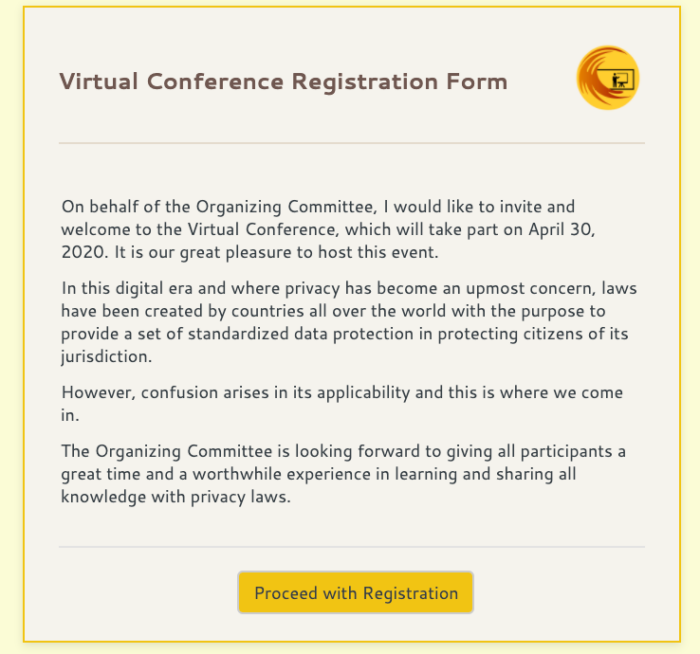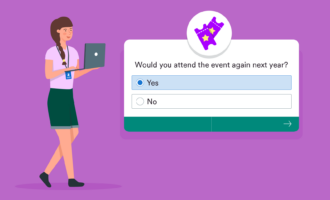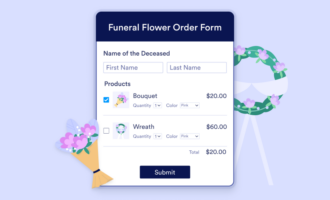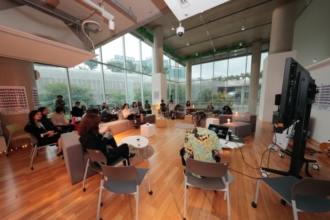With all in-person gatherings halted in light of the COVID-19 pandemic, many conferences are going virtual, forcing event organizers to act fast, learn on their feet, and answer new questions, such as
- How do you plan a virtual conference?
- How should a virtual conference look?
- How do you shift what was supposed to be a physical event to a virtual event?
With virtual conferences still emerging, there’s plenty of room for experimentation. Successful event organizers are leveraging technology to create new formats and engage digital audiences. When planning your virtual conference, think through these three areas to maximize your chances of a successful event.
3 tips for virtual conference success
- Consider the flexibility (and limitations)
- Choose the right technology platform
- Plan for audience engagement
1. Consider the flexibility (and limitations) of virtual formats
When employee survey and people analytics provider Perceptyx had to cancel its annual Innovation Conference due to COVID-19, they decided to go virtual — but they wanted to do it a little differently than a traditional conference. Rather than livestream a one-day conference online, they turned the content they developed for the conference into a series of individual webinars they plan to broadcast biweekly.
According to Perceptyx events manager Joshua San Julian, “Realistically, there are two ways to do a virtual conference. You can emulate a physical conference with attendees watching live streams from their computer for six to eight hours, or you can break it out into a series over a period of time.”
Virtual conferences allow event organizers much more flexibility than physical conferences. Rather than being bound by time, location, and logistics, virtual conferences are only bound by the limits of the technology you use to host them. When planning your virtual conference, rethink the format to better accommodate your audience, rather than just attempting to mimic a physical conference.
Some events are better suited for a virtual format than others. “Virtual events are not created equal yet. I think the best format for them is lectures and small groups in a round table. When it comes to large events with exhibits, such as a trade show floor, the virtual solution for that is missing right now,” San Julian says.
2. Choose the right technology platform for your conference
The software solutions you use to host your virtual conference will play a significant role in determining what your event looks like. The growth of virtual conferences has seen a corresponding growth of hosting platforms, including
- ON24. This interactive and data-rich webinar and multimedia digital experience platform specializes in targeted marketing, lead qualification, and customer engagement for enterprises. ON24 is best suited for larger organizations whose events play a key role in their sales cycle.
- Run The World. This comprehensive virtual conference platform has tools for interactive livestream talks, discussions, and panels. It also features a “virtual cocktail party” option that uses an algorithm to connect attendees with each other based on questionnaires they fill out prior to the event.
- Whova. This award-winning video conference solution integrates with video hosting tools — such as YouTube, Zoom, and Google Meet — and allows you to display livestreams and videos in one place. It offers a host of interactivity features, such as live Q&A sessions, attendee networking, a discussion board, meeting-matches, a virtual exhibitor hall, and virtual meet-ups.
You can also use popular video conferencing tools such as Zoom to host your conference. One popular strategy is to use Zoom Webinar, which allows for thousands of view-only attendees, for the main stage and webinar recordings, and use Zoom Meetings for breakout sessions. Zoom also offers a breakout room feature that allows attendees to separate into smaller groups to have private conversations and then rejoin the main event later.
“We use Zoom for video meetings, so we also use it for our events. In a previous company I was with, we used Cisco Webex for meetings and video calls — so we also used Webex for events. You don’t necessarily need to use a big platform that costs a lot of money,” says San Julian.
Don’t forget to create a website for your conference with event details and registration. You can use Jotform’s easy-to-use online Form Builder to create registration forms, guest application forms, payment forms, attendee surveys, and more that integrate with your CRM and other software.

3. Plan for audience engagement
According to San Julian, creating the programming for virtual conferences is similar to the process for a physical event — you need a message to communicate, panelists and speakers to discuss their viewpoints with moderators, and supporting content, such as slideshows and videos.
Where a virtual conference really differs from an in-person one, he says, is in the execution — especially with regard to the social interaction and cues from the audience. “For the presenters, it’s hard to do without attendee interaction. You’re presenting a screen and not getting a lot of instant feedback. The panelists are having a discussion, but they don’t really get to feed off the audience in the same way,” says San Julian.
To combat this challenge, make the most of the engagement tools your software offers, such as Q&A, chat, and polling. Also, be sure to clarify which tools you’ll use beforehand and communicate that to your audience.
San Julian suggests bringing panelists into the virtual meeting room early to help them warm up and connect with each other. “We have all the panelists arrive 30 minutes before the conference for a casual conversation to help them get to know each other. We remind them we want the conversation to be like they’re sitting in a room together, even though they’re at home looking at a screen and can’t see the audience.”
Even with the best preparation, it’s simply not possible for virtual conferences to replicate the organic social mingling of in-person events. While tomorrow’s tools may bring better ways to bridge this gap, San Julian thinks attendees will always want in-person events. “Virtual events are good for now, but the industry is not going to be all virtual.”























































Send Comment: